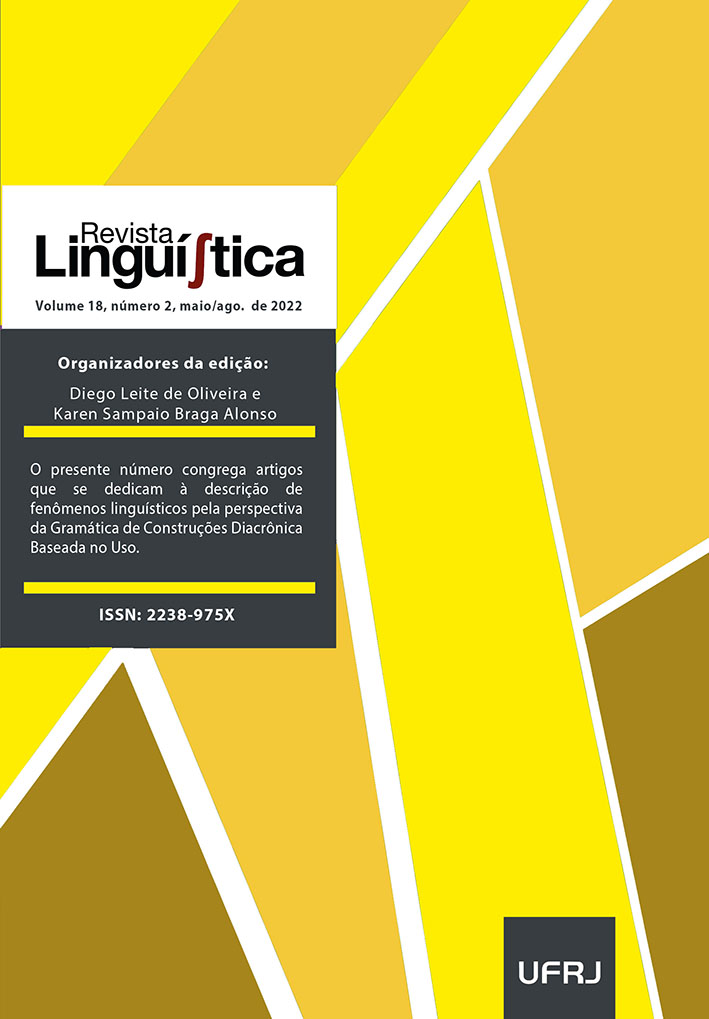The change path of [meio que] in Brazilian Portuguese and the constructions [kind of/kinda] in English and [en plan (de)] in Spanish: a contrastive analysis in the light of diachronic construction grammar
DOI:
https://doi.org/10.31513/linguistica.2022.v18n2a55700Keywords:
[meio que] construction, [kind of/kinda] construction, [en plan (de)] construction, diachronic construction grammar. contrastive investigationAbstract
This paper analyzes the change path of the construction [meio que] in Brazilian Portuguese, using data covering a period of six centuries (16th-21st), extracted from the Corpus do Português (DAVIES; FERREIRA, 2006; DAVIES, 2019). Based on the theoretical framework of Diachronic Construction Grammar (SOMMERER; SMIRNOVA, 2020; TRAUGOTT; TROUSDALE, 2013), it is proposed that this construction integrates the network formed by the superior node [X que], however, unlike other instantiated constructions by this node, [meio que] is not grammaticalized as a conjunction or as an index of modality, but, initially, as an adverb and, later, as a discourse marker. Furthermore, it is proposed that the process was triggered from the reanalysis of the complex NP [Det meio [que...]]NP, comprising a change path similar to that of the constructions [kind of/kinda] in English (MARGERIE, 2010) and [en plan (de)] in Spanish (RODRÍGUEZ-ABRUÑEIRAS, 2020), which translinguistically attests the cline noun > adverb > discourse marker, as proposed by Rodríguez-Abruñeiras (2020). Additionally, the factors of schematicity, compositionality and productivity of the construction [meio que] were analyzed. It was found that there is a downward trend in lexical uses (as a complex NP whose head is the noun meio or as part of a numeral followed by que) in the 20th century and a growing trend in constructionalized uses (as an adverb or as a discourse marker) from that same century, period in which the change occurs, as well as that such series are inversely correlated, as attested by the statistical tests used in the quantitative analysis of the phenomenon.Downloads
Published
Issue
Section
License
Authors who publish in the Revista Linguí∫tica agree with the following terms:
The authors maintain their rights, ceding to the journal the right to first publication of the article, simultaneously submitted to a Creative Commons license permitting the sharing with third-parties of published content as long as it mentions the author and its first publication in the Revista Linguí∫tica.
Authors may enter into additional agreements for the non-exclusive distribution of their published work (for example, posting in online institutional or non-profit repositories, or book chapters) so long as they acknowledge its initial publication in the Revista Linguí∫tica.

The journal Revista Linguí∫tica is published by the Post-Graduate program in Linguistics of UFRJ and employs a Creative Commons - Attribution-NonCommercial 4.0 International (CC-BY-NC).









